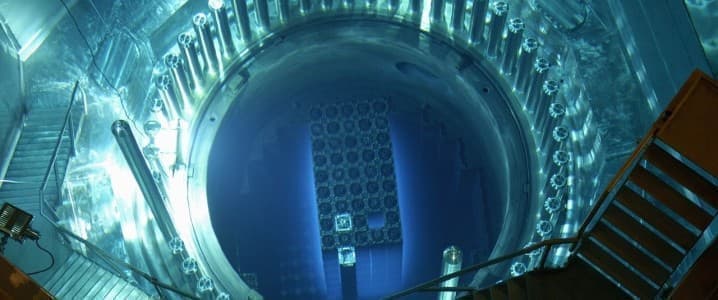
You can feel the buzz: nuclear is back. Or so we’re told.
From Brussels to Washington, a new wave of enthusiasm for so-called Small Modular Reactors (SMRs) is sweeping through policy circles, think tanks, and energy startups. These compact, supposedly plug-and-play nuclear units are being hailed as the perfect solution to power data centers, feed artificial intelligence’s growing hunger, and backstop our energy transition with clean, stable electricity.
There’s just one problem. Actually, there are many. None of them small.
The hype cycle is in full spin
SMRs are currently being marketed like they’re the iPhone of nuclear energy: smarter, smaller, cheaper, scalable. A miracle solution for everything from remote grids to decarbonizing heavy industry and AI’s server farms. Countries like the U.S., Canada, and the UK have announced ambitious deployment plans. Major developers, including NuScale, Rolls-Royce SMR, GE Hitachi, and TerraPower, have painted glossy timelines with glowing promises.
Except the fine print tells a different story.
There are currently no operational commercial SMRs anywhere in the world. Not one. NuScale, the U.S. frontrunner, recently cancelled its flagship Utah project after costs ballooned to over $9,000 per kilowatt and no investors could be found. Even their CEO admitted no deployment would happen before 2030. Meanwhile, Rolls-Royce’s much-hyped SMR factory hasn’t produced a single bolt of steel yet.
Related: Coal Demand Rebounds Across Asia Ahead of Winter
So, we’re betting on a technology that doesn’t yet exist at commercial scale, won’t arrive in meaningful numbers before the 2030s, and would require thousands of units to significantly contribute to global energy demand. That’s not a strategy. That’s science fiction.
Big nuclear hasn’t exactly inspired confidence either
Even the large-scale projects that SMRs claim to “improve upon” are struggling. Take the UK’s Hinkley Point C, once heralded as the future of nuclear energy in Europe. It’s now twice as expensive as originally planned (over £46 billion), at least five years late, and facing ongoing construction delays. The French-backed EPR reactor design it’s based on has already been plagued with similar issues in Flamanville (France) and Olkiluoto (Finland), where completion took over a decade longer than promised and costs ballooned dramatically.
Let’s be honest: if any other energy technology was this unreliable on delivery, we’d laugh it out of the room.
Price floors for nuclear, and price ceilings for reason
In France and Finland, authorities have now agreed to guaranteed minimum prices for new nuclear power, effectively writing blank checks to ensure profitability for operators. In Finland, the recent deal sets the floor above €90/MWh for 20 years. Meanwhile, solar and wind regularly clear wholesale power auctions across Europe at €30–50/MWh, with even lower marginal costs.
Why, exactly, are we locking in decades of higher prices for a supposedly “market-based” energy future? It’s hard to see how this helps consumers, industries, or climate targets. Especially when these same nuclear plants will also require major grid upgrades, just like renewables, because any large-scale generator needs robust transmission capacity. So no efficiency win there either.
The SMR promise: too small, too late
Back to SMRs. Let’s suppose the best-case scenario plays out. A couple of designs clear regulatory approval by 2027–2028, construction starts in the early 2030s, and the first commercial units are online before 2035. Even then, the world would need to build and connect thousands of these small reactors within 10–15 years to displace a meaningful share of fossil generation. That’s a logistics nightmare, and we haven’t even discussed public acceptance, licensing bottlenecks, uranium supply, or waste management.
For perspective: in the time it takes to build a single SMR, solar, wind, and battery storage could be deployed 10 to 20 times over, for less money, with shorter lead times, and with no radioactive legacy.
And unlike nuclear, these technologies are modular today. They’re scalable now. They’ve proven themselves everywhere from the Australian outback to German rooftops and Californian substations.
The elephant in the reactor room: waste and risk
Nuclear fans love to stress how “safe” modern designs are. And yes, statistically speaking, nuclear energy is relatively safe per kilowatt-hour. But it’s also the only energy source with a non-zero risk of catastrophic failure and waste that stays toxic for thousands of years.
Why, exactly, would we take that risk when we have multiple clean energy options with zero risk of explosion and waste streams that are either recyclable or inert?
You don’t need to be a nuclear physicist to ask this: how is betting on high-cost, slow-deploying, risk-bearing, politically toxic infrastructure a better idea than wind, solar, and storage?
A footnote in the transition, not the headline
Let’s be clear: nuclear power will likely continue to play a role in some countries’ energy mixes. France and Sweden have legacy fleets. New projects may go ahead in China or South Korea, where costs are contained and planning is centralized. But for the majority of the world, especially countries trying to decarbonize fast, new nuclear is not the answer.
SMRs, despite their branding, will not save the day. They will be at best a niche, possibly a small contributor in specific applications like remote mines, military bases, or industrial clusters where no other solution works. That’s fine. But let’s stop pretending they’re some kind of energy silver bullet.
Final thoughts
We are in the decisive decade for climate action. Every euro, dollar, and yuan we invest must yield maximum emissions reduction per unit of time and cost. By that standard, SMRs fall flat. Nuclear power, small or large, is simply too expensive, too slow, too risky, and too narrow in its use case to lead the energy transition.
So let’s cool the reactor hype. Let’s focus instead on the technologies that are already winning: wind, solar, batteries, heat pumps, grid flexibility, green hydrogen. These are not dreams. They’re deploying by the gigawatt, today. SMRs are fascinating, yes. But when it comes to decarbonization, we need workhorses, not unicorns.
By Leon Stille for Oilprice.com
More Top Reads From Oilprice.com
China Defies Sanctions With Sixth Russian Arctic LNG Cargo
Italy Approves Saipem-Subsea 7 Energy Services Merger
Norwegian Offshore Oil and Gas Production Surges Past Expectations



